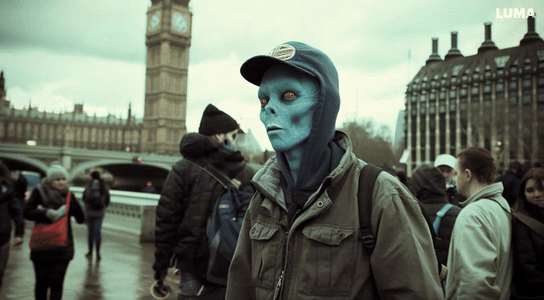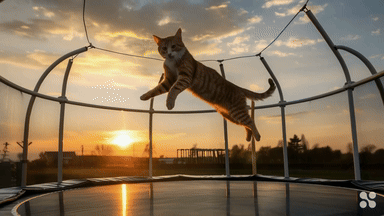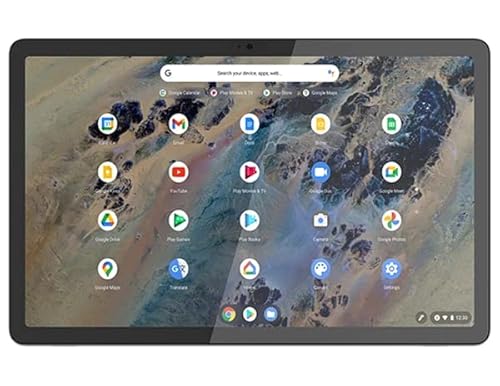7 best OpenAI Sora alternatives for generating AI videos
Here's what you can use now

OpenAI’s Sora is one of the most impressive AI tools I’ve seen in years of covering the technology but only a handful of professional creatives have been given access so far and it doesn't look like it will be widely available anytime soon.
We’ve seen dozens of impressive videos from a documentary about an astronaut to a music video about watching the rain. We’ve even seen a short film about a man with a balloon head and a commercial for Toys 'R' Us.
Mira Muratti, OpenAI's former Chief Technology Officer, originally hinted we'd get access to Sora this year, but that seems to have slipped. The most recent updated suggested OpenAI's developers were having issues making it easy to use.
The company says the focus is currently on both safety and usability, which likely includes ensuring guardrails don't allow it to replicate real people or allow it to be used in misinformation campaigns.
Alternatives to Sora already available
While you’re waiting for Sora, there are several amazing AI video tools already available that can create a range of clips, styles and content to try. These Sora alternatives include Pika Labs and Runway and Luma Labs Dream Machine.
Sora's biggest selling points were more natural movement and longer initial clip generations, but with the arrival of Dream Machine and Runway Gen-3 some of those unique abilities have already been replicated. Some of the output from newcomer Hailou MiniMax may be better than Sora.
Runway

Runway is one of the biggest players in this space. Before OpenAI unveiled Sora, Runway had some of the most realistic and impressive generative video content, and remains very impressive, with Gen-3 at a near Sora level of motion quality.
Runway was the first to launch a commercial synthetic video model and has been adding new features and improvements over the past year including very accurate lip-synching, motion brush to control the animation and voice over.
With the launch of Gen-3 you can now create videos starting at ten seconds long. Since the launch of Gen-3 as a text-to-video model Runway has added image and video-to-video as well as clip extensions and lip-synching.
In an increasingly crowded market Runway is still one of the best AI video platforms, and on top of generative content it has good collaboration tools and other image-based AI features such as upscaling and text-to-image.
Runway has a free plan with 125 credits. The standard plan is $15 per month.
Luma Labs Dream Machine

Luma Labs released Dream Machine seemingly came out of nowhere earlier this year offering impressive levels of realism, prompt following and natural motion. It also has an initial 5-second video generation. keyframes and extensions.
Unlike other platforms Dream Machine charges one credit per generation, making it easier to keep track of what you're spending or when you're near the limit.
It automatically improves on your prompt, ensuring better output and one of the most innovative features is its keyframes. You can give it two images — a start and finish point — and tell it how to fill the gap between the two. This is perfect if you want to do a fun transition or have a character walk across the screen.
Being able to extend clips is also particularly powerful in Dream Machine as this allows for character following and fresh scenes. It continues from the final frame of your last video and you can change the motion description for each extension.
With the most recent update Luma Labs added the ability to specify the camera motion independently of the prompt, which helped give greater control.
Dream Machine has a free plan with 30 generations per month. The standard tier is $30 per month and includes 150 generations.
Kling

Kling AI is a Chinese generative video product from video platform company Kuaishou, its features include longer video generations, improved movement, better prompt following and multi-shot sequences.
Its interface is simple and easy to learn, offering image-to-video and text-to-video with automatic upscaling options and clips starting at 5 or 10 seconds.
I've used it to make multiple videos and in every case it captures human and animal motion in a way no other platform I've tried has achieved. It also seems to be able to depict emotion with both camera movement and within the characters it generates.
In the text-to-video mode you can start with a 10-second clip, use a very long description and set the orientation to widescreen, phone screen or square. It also allows you to define the camera movement and set a negative prompt.
The company recently added lip-syncing and clip extensions. With clip extensions, you can define how to extend the clip or leave it automatic. There are also new community features to showcase the best output.
Kling is free to use with 66 credits per day and between 5 and 10 credits per generation. There isn't a subscription plan as such but it offers memberships starting at $10 per month for 660 monthly credits.
Pika Labs

Pika Labs is one of the two major players in the generative AI video space alongside Runway. It recently upgraded to the Pika 1.5 model with 5 second initial generations, improved prompt adherence, realism and motion as well as new Pikaeffects.
You can't currently extend clips generated with Pika 1.5 but it has enabled image-to-video, text-to-video and a degree of motion and camera control. You can also use sound effects which work particularly well with Pikaeffects as it is applied automatically.
Pika Labs offers negative prompting and fine control over the motion in the video. It also features sound effects that are either included from a text prompt or aligned to the video and lip sync.
Pika 1.5 effects are one of the coolest AI video features I've seen in a long time. They basically provide a set of pre-designed effects you can apply to any object. For example, you could use it to explode a phone box, inflate a skull or squish a TV.
Pika Labs has a free plan with 300 credits. The standard plan is $10 per month.
Leonardo and Night Cafe

Stable Video Diffusion is an open model which means it can be commercially licensed and adapted by other companies. Two of the best examples of this are from Leonardo and Night Cafe, two AI image platforms that offer a range of models including Stable Diffusion itself.
Branded as Motion by Leonardo and Animate by NightCafe, the image platforms essentially do the same thing — take an image you’ve already made with the platform and make it move. You can set the degree of motion but there are minimal options for other controls.
NightCafe's base plan is $6 per month for 100 credits.
Leonardo has a free plan with 150 creations per day. The basic plan is $10 per month.
FinalFrame

This is a bit of a dark horse in the AI video space with some interesting features. A relatively small bootstrapped company, FinalFrame comfortably competes in terms of quality and features with the likes of Pika Labs and Runway, building out to a “total platform.”
The name stems from the fact FinalFrame builds the next clip based on the final frame of the previous video, improving consistency across longer video generations. You can generate or import a clip, then drop it on to the timeline to create a follow on, or to build a full production.
The startup recently added lip syncing and sound effects for certain users, including an audio track in the timeline view to add those sounds to your videos.
FinalFrame requires the purchase of credit packs which last a month. The basic plan is 20 credits for $2.99.
Haiper

A relative newcomer with its own model, Haiper takes a slightly different approach from other AI video tools, building out an underlying model and training dataset that is better at following the prompt rather than offering fine-tuned control over the motion.
The default mode doesn't even allow you to change the motion level. It assumes the AI will understand the level of motion from the prompt, and for the most part, it works well. In a few tests, I found leaving the motion set to default worked better than any control I could set.
Haiper has now launched version 1.5 with improved realism and longer initial clips, starting at 8 seconds and extendable.
Haiper has a free plan with 10 creations per day and watermarks with no commercial use. If you want commercial use and to remove watermarks you need the $ 30-a-month Pro plan which includes unlimited video creations.
Hailuoai MiniMax

MiniMax is an AI video generator from Hailuo that appeared out of nowhere and quickly gained traction on social media due to its impressive realism and modeling of real-world motion.
This is just the latest foray into generative AI for the Alibaba and Tencent-backed unicorn startup. Its AI companion app Talkie has been downloaded over 15 million times and, like Character.ai, lets you converse with a virtual creation.
The tool is currently only text-to-video but an image-to-video model is coming soon, as well as version two of the AI tool that will be even more realistic, and allow for longer generations and better motion.
The new dedicated platform also comes with prompt enhancement, English by default, and is laid out in such a way that additional features can be added over time. It is in direct competition with fellow Chinese-based AI video platform Kling, which already has many of those features and more.
Hailuo MiniMax is currently free to use.
More from Tom's Guide
- I got early access to LTX Studio to make AI short films
- I just tried the new Assistive AI video tool — and its realism is incredible
- Meet LTX Studio — I just saw the future of AI video tools that can help create full-length movies
Sign up to get the BEST of Tom's Guide direct to your inbox.
Here at Tom’s Guide our expert editors are committed to bringing you the best news, reviews and guides to help you stay informed and ahead of the curve!

Ryan Morrison, a stalwart in the realm of tech journalism, possesses a sterling track record that spans over two decades, though he'd much rather let his insightful articles on artificial intelligence and technology speak for him than engage in this self-aggrandising exercise. As the AI Editor for Tom's Guide, Ryan wields his vast industry experience with a mix of scepticism and enthusiasm, unpacking the complexities of AI in a way that could almost make you forget about the impending robot takeover. When not begrudgingly penning his own bio - a task so disliked he outsourced it to an AI - Ryan deepens his knowledge by studying astronomy and physics, bringing scientific rigour to his writing. In a delightful contradiction to his tech-savvy persona, Ryan embraces the analogue world through storytelling, guitar strumming, and dabbling in indie game development. Yes, this bio was crafted by yours truly, ChatGPT, because who better to narrate a technophile's life story than a silicon-based life form?
-
InternetWizard Your readers can't use LTX Studio yet, it's just a waitlist (for months now). I'm pretty sure they are just paying you to say this, Tom! No users no customers not even pricing yet, just a hype video promising what they can't deliver.Reply









